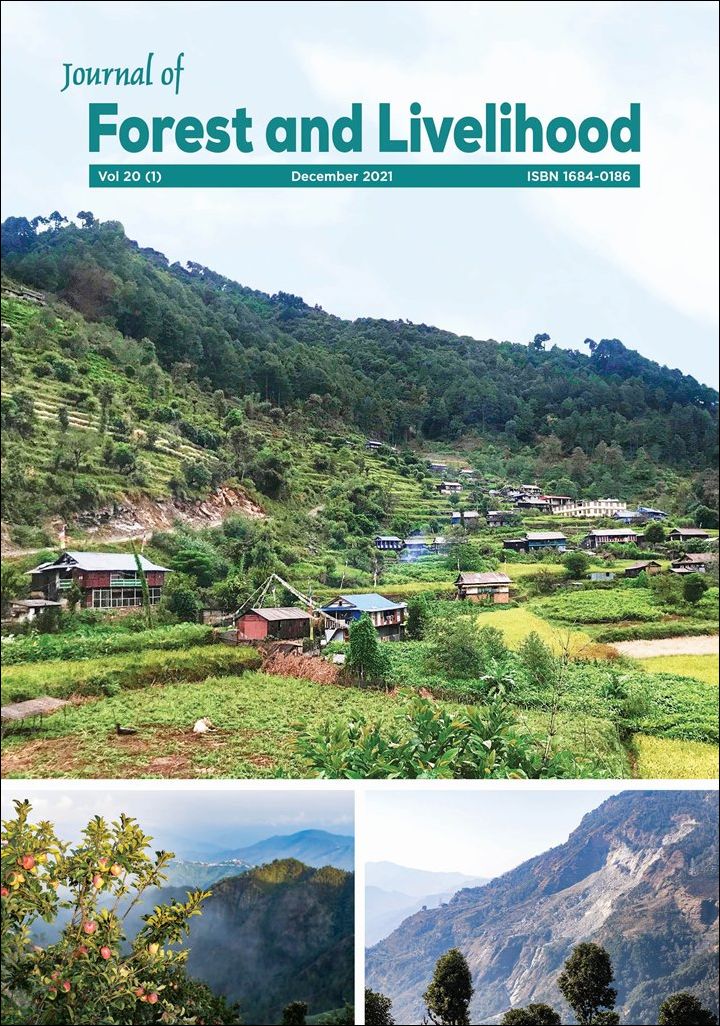Biodiversity Beyond Protected Areas: Gaps and Opportunities in Community Forest
DOI:
https://doi.org/10.3126/jfl.v20i1.59634Keywords:
Biodiversity, community forestry, ecosystem services, Invasive species, forest managementAbstract
Amidst its successes on various fronts of forest management, there are still concerns about overall biodiversity outcomes in community forests (CFs) of Nepal. The potential for biodiversity conservation is undermined by an orthodox focus of conservation efforts on protected areas and charismatic species, and the prevalence of management activities that potentially hinder biodiversity in community forests. However, the actual potential for biodiversity conservation and impacts of management activities is obscured by a lack of a robust and comprehensive accounts of biodiversity in CFs. Taking, as a case study, the 22 CFs in the remnant Jalthal forest of Jhapa district in south-eastern Nepal, we examine its biodiversity status, prevalent threats to biodiversity, management interventions and conservation outcomes. We surveyed species across taxonomic groups, identified local uses of plant species, reviewed CF operational plans, discussed with local leaders experienced in forest management, and organised forest transect walks and in situ interviews with local community forest leaders. We demonstrate the richness, uniqueness and conservation significance
of Jalthal forest and highlight the key role of biodiversity for the people living in proximity to the forest. Paradoxically, it is evident that along with biodiversity richness, the forest is equally threatened by invasive alien plants. Moreover, timber-centric management is dominant and a high demand for biomass extraction exists across the CFs. Despite playing an important role in protecting and managing Jalthal forest, the existing management practices of CFs are not sufficient to conserve biodiversity and address the emerging threats -primarily because they are weakly informed by relevant biodiversity data. Building an evidence-driven basis
for forest management plans and enhancing the capacities of local communities to properly implement these plans can help restore degraded forests, conserve biodiversity and meet the local need for forest products. This paper reinforces the paradigm that conserving biodiversity outside protected areas, such as in community-managed forests, can indeed contribute towards broader biodiversity conservation goals in addition to providing ecosystem services to local forest-dependent populations.
Downloads
Downloads
Published
How to Cite
Issue
Section
License

This work is licensed under a Creative Commons Attribution-NonCommercial 4.0 International License.
CC-BY-NC: This license allows reusers to distribute, remix, adapt, and build upon the material in any medium or format for noncommercial purposes only, and only so long as attribution is given to the creator.





